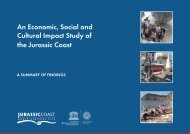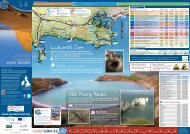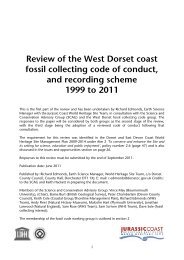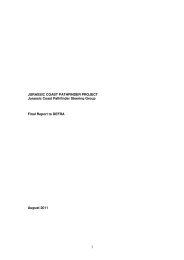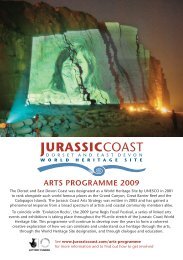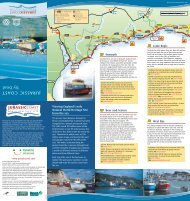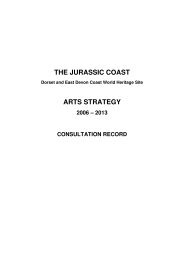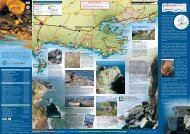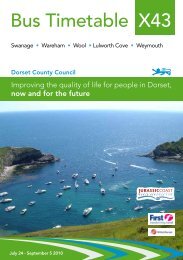Jurassic Coast Transport Infrastructure Gap Analysis Study
Jurassic Coast Transport Infrastructure Gap Analysis Study
Jurassic Coast Transport Infrastructure Gap Analysis Study
- No tags were found...
Create successful ePaper yourself
Turn your PDF publications into a flip-book with our unique Google optimized e-Paper software.
4.7.3 The legibility of a bus timetab le leaf let is very closely linked to the simp licityof the service itself. A simpler service that offers fewer journeys maygenerate more passengers than a more complex service with more journeysbecause it can be more easily understood by potential users, includingvisitors. Additional information on this topic is covered in Chapter 6.4.7.4 In the absence of an up-to-date service leaflet, the following analysis appliesto the inf ormation within the Bus & Train Times South Dorset booklet, andsuggestions are aimed at how a future service 103 specific leaf let should beproduced.4.7.5 The telephone symbol is deployed to good effect to denote that bookingsmust be made for the DRT stops. To improve legibility, font sizes could beincreased and best practice guidance should be referred to in terms ofgeneral design and presentation. The two different parts to the timetab le -103 and 103A - make it confusing for the uninitiated. In fact, NORDCAT reportthat when visitors enquire about the service, they refer to the two aspects ofthe service as the ‘big bus’ and the ‘small bus’ to avoid any conf usion (ratherthan 103 and 103A).4.7.6 If a specific timetable leaf let is produced, legibility is the key and the actua ltimetable itself should be minimalist in use of colour and design. Referenceshould be made to best practice guidance, such as that by ATOC.4.7.7 The non-timetable part of the leaflet should be attractive to read and clearlyexplain what a DRT service is and how it works (potentially written as‘frequently asked questions’). A map should be used including explanations ofall symbols. In general terms, text information on a DRT leaflet should assumethat users and potential users have absolutely no knowledge of how (any) busservices work. Some of the text used on the D2D publicity informationassumes too much knowledge on behalf of passengers and potentialpassengers. The text would be improved by being written in clearer, plainerenglish, avoiding all technical jargon, and by taking potential passengersthrough how the service works step by step assuming zero knowledge. Theexisting service information contains terms which potential travellers may notbe familiar with, such as ‘timing points’. The use of technical terms such astiming point, flexib le area, fixed stop, and Hail & Ride should be minimised,and if these terms are to be used, they should be accompanied by a clearexplanation of their meaning. It is important that all publicity materialDoc No 3 Rev: B Date: November 2008 68G:\Final Report Web version\CTR-ADA <strong>Study</strong> Report Rev9.4. doc





